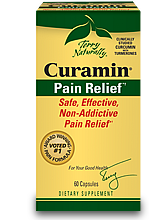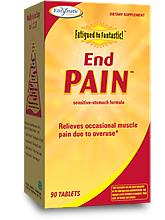The 7 Forms of Pain in Fibromyalgia

I've treated thousands of people who have fibromyalgia. In nearly all cases, I've been able to help my patients become either completely pain free or at least reduced their pain enough (by at least 50% as demonstrated by our published research) to allow them to resume a comfortable life. So, let's talk about the different kinds of pain commonly seen in fibromyalgia.
To begin with, it's important to recognize that pain is a normal and healthy part of your body's monitoring system. It tells you when something needs attention — when your hand touches a hot stove, pain tells you to take it off. The problem is when you feel pain but can't intuitively identify the cause. This is the case with pain that's caused by fibromyalgia.
Types of Fibromyalgia Pain
1. Myofascial Pain
A muscle is like a spring in that it takes more energy for a muscle to relax than to contract. When muscles don't have enough energy, as results when you have fibromyalgia, they can become locked in shortened positions forming tender knots. This can occur throughout your body, and after a while your muscles begin to hurt, often severely. And because muscles attach bones through tendons, tight muscles can lead to tendinitis throughout your body. This will often feel like joint pain, chest pain, or deep organ pain. For example, tightened muscles attached to the bottom of your lowest rib can feel like pain coming from your liver, spleen or kidneys (you can confirm this if pushing up on the bottom of these ribs reproduces the pain). Muscle pain can even result in more unexpected symptoms like nasal congestion and indigestion.
This muscle-tightening pain is called "myofascial pain," and the tender knot pain points caused by this are referred to as "trigger points." Myofascial pain is the primary initial source of pain in most people with fibromyalgia. Adding insult to injury, the presence of this chronic pain often leads to developing two other pains: central sensitization and neuropathic pain.
2. Central Sensitization
Sometimes called "brain pain," central sensitization is a form of pain that results in fibromyalgia when sensitivity to pain increases in the brain itself. Lyrica, Cymbalta, and Neurontin are medications often used to treat this. Another important medication is low dose naltrexone. Although this medication is more commonly used for treating opioid dependence or alcohol dependence, low-dose naltrexone (3-4.5 mg) can be very helpful for decreasing pain after two months of use.
3. Neuropathic Pain
The muscle tightening from myofascial pain can also pinch nerves in your body, causing neuropathic pain. A related condition called "small-fiber neuropathy," which contributes to autonomic dysfunction (i.e., low blood pressure, weakness and gut problems), can also result from this. Optimizing thyroid function and adding nutritional support (e.g., Lipoic acid 300 mg 2x day) can be very helpful for healing the nerves, as can specific medications.
4. Allodynia
Allodynia is a type of skin pain where it hurts to be lightly touched. This tends to be a later stage of fibromyalgia. The medications Namenda, Neurontin and/or Lyrica can be very helpful for this kind of pain. Topical ketamine can be helpful in severe cases.
5. Pelvic Pain Syndromes (Including Pain During Intercourse)
Pelvic pain syndrome usually comes from muscle pain in the pelvic floor (the muscles, ligaments, and tissue that support your pelvic organs and pelvic joints). But the condition can also be neuropathic. Pelvic floor physical therapy combined with a prescription of the medications Neurontin and Elavil usually help this.
6. Migraines and Headaches
Prescription medications and over-the-counter treatments are commonly available for migraines and headaches. In addition, taking riboflavin (vitamin B2) 400 mg a day and magnesium can help decrease the frequency of their occurrence by over 70% after six weeks. This is particularly notable since most Americans are magnesium-deficient.
7. Abdominal Pain
Abdominal pain resulting from indigestion, small intestinal bacterial overgrowth (SIBO), and irritable bowel syndrome is another pain associated with fibromyalgia. Treating the underlying infections and improving digestion are very effective for these.
Reducing Fibromyalgia Pain
Unfortunately, most physicians simply aren't trained in how to do a proper examination to determine the source of fibromyalgia pain. To have this done, you need to find a healthcare practitioner who is specifically trained in pain management. Chiropractors, bodyworkers trained in myofascial release, physicians trained in Physical Medicine and Rehabilitation are examples of health practitioners who are often better trained for this kind of examine.
In general, there are four areas that should be considered when exploring treatment for fibromyalgia pain:
- Biochemical. This includes medications as well as natural alternatives such as herbals and other nutrients. Learning about the S.H.I.N.E.® Protocol can help you find the root biochemical causes of your pain.
- Structural. This includes massage, chiropractic, ergonomics, yoga and surgery. Bear in mind, however, that until the underlying issues causing your pain are addressed, structural treatments will usually only provide temporary relief.
- Biophysics. This includes acupuncture (though this is generally not very effective for fibromyalgia) and frequency specific microcurrent (which is effective). Vagal nerve stimulation is also promising (see more on this and other new treatments in an upcoming article).
- Mind-body issues. There is a reason some people are called a pain in the back (or lower).
In addition to over a dozen prescription medications, there are numerous natural alternatives for pain relief including herbal mixes such as Curamin, End Pain, Hemp Oil (3 caps 2x day and 5 at bedtime is optimal, but pricey; lower doses often help as well), and topical creams such as Traumaplant Comfrey Cream. These can be combined with any pain medications.
Almost everyone with fibromyalgia can get pain free NOW!

Jacob Teitelbaum, M.D. is one of the most frequently quoted post viral CFS, fibromyalgia, energy, sleep and pain medical authorities in the world. He is the author of 12 books including You Can Heal from Long Covid, the best-selling From Fatigued to Fantastic!, Pain Free 1-2-3, The Complete Guide to Beating Sugar Addiction, Real Cause Real Cure, The Fatigue and Fibromyalgia Solution, and the popular free Smart Phone app Cures A-Z. He is the lead author of eight research studies and three medical textbook chapters on effective treatment for fibromyalgia and chronic fatigue syndrome. Dr. Teitelbaum appears often as a guest on news and talk shows nationwide, including past appearances on Good Morning America, The Dr. Oz Show, Oprah & Friends, CNN, and FoxNewsHealth.
Websites: Vitality101.com | EndFatigue.com
Facebook Support Group: Recovering from Fibromyalgia, Chronic Fatigue, and Long COVID
Facebook Page | Instagram



